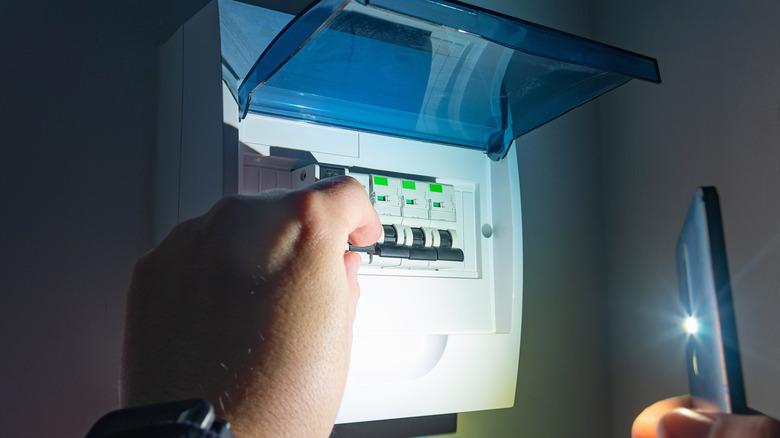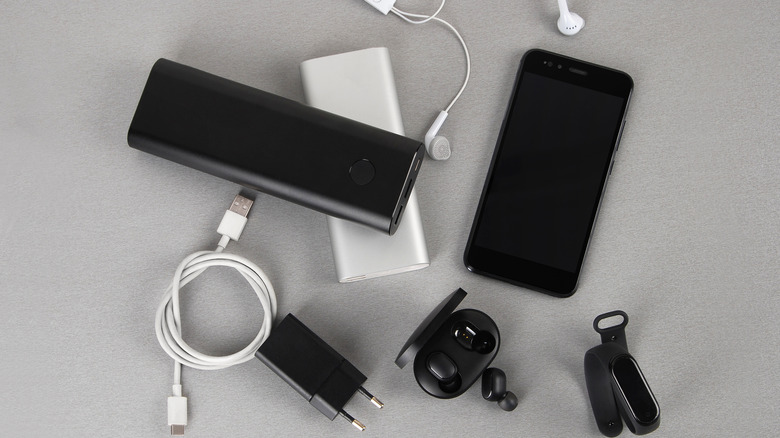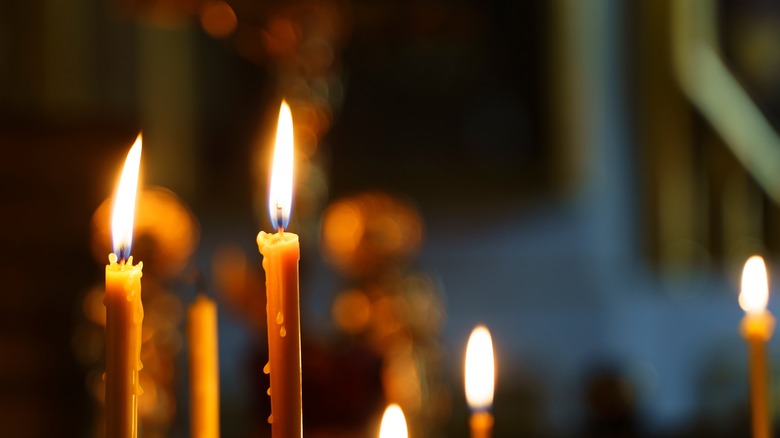The 3 Most Essential Items For Your Home Safety Kit In Case Of A Power Outage
Home safety is a crucial part of planning for any natural disaster or other source of a power outage in your local area. Homeowners across the country are constantly listening to their local news and radio stations suggesting the compilation of an emergency safety kit in the event of snow, high winds, flooding, and other extreme weather events.
Part of this planning lies in the preparation for a power outage that can extend across multiple days — or even weeks in the worst-case scenario. The American Red Cross suggests stocking up on food and water supplies in the days or weeks before storm systems arrive in your part of the country, if possible. This is easier said than done for some: Hurricane season returns each year like clockwork, but a flash flood, blizzard, or the touchdown of a tornado can occur without warning. Preparing in a way that makes sense for the kinds of emergencies that can knock out the power to your home is essential.
You'll also want to stay connected to the news broadcasting system with the help of a portable radio. Handheld radios or moderately sized systems can be powered by a crank device or with solar panels. Either option is a great asset for homeowners sticking it out through a power failure. These are essential, but perhaps the three most important assets in a home safety kit are listed below. You won't want to be caught without them.
First aid kit
A first aid kit is absolutely crucial, and UCSan Diego Health has a list of what you should have in yours. Injuries can happen in an instant, and without the ability to tend to a cut or scrape, the problem will inevitably grow more severe. In the dark, it's easy to bump into things, fall, or cut yourself on an unseen object. During power outages, families will want to try to stay together as much as possible while minimizing their exposure to potentially harmful elements in and around the home.
Likewise, people who take medicine regularly for a health condition of any sort will want to stock up on their prescription and over-the-counter pills, gels, and other medicinal supplements. If your community is without power, there's a good chance that you'll be unable to run out to the pharmacy for a refill. The odds of essential medication replenishment only become longer as the time it takes to restore power continues to expand. Ensuring that your first aid kit has enough medication to bridge the gap is a crucial consideration that all homeowners should place at the head of their disaster preparedness procedures.
Also of note, if you or one of your family members relies on medical equipment that demands a power outlet, adding a portable generator to your home is a part of your first aid planning rather than a separate concern.
Portable power banks
Homeowners in the modern world should bring a reliable radio into their emergency planning, but radio reports have become a secondary source of information gathering these days. The radio is a great failsafe, but the cell phone is a much more potent tool for finding and sharing information throughout a community. However, unlike the emergency radio, cell phones rely on a consistent charge that typically comes from the wall outlet — a resource made unavailable by the circumstance.
Keeping power banks in the house, and maintaining a charge in them, is a must for any power failure planning. Power banks offer expansive battery capacity, with many offering multiple, full charges to a cell phone before exhausting its reserves. Wirecutter recommends a power bank with multiple ports as well as a variety of connection options (USB-A, and USB-C, preferably). Likewise, for practical reasons, many people own and carry small batteries with them that can hold a single charge for their device (ranging from 3,000 to 5,000 mAh, typically). A power bank that boasts a rating of 20,000 or greater will ensure that one of your cells remains active throughout the emergency, with more than five full charges on a standard phone.
Adding one or more of these large capacity power banks to your emergency gear will ensure continuity of communication with the world around you and a free flow of information that will help you make smarter decisions while waiting for relief.
Flashlights and candles
Lastly, visual contact is a must in any emergency circumstance. When the power goes out, so too does your ability to see around the house or beyond it when the sun sets for the night. Candles and flashlights will help you get around the house, kill time with your loved ones, and maintain functional capabilities in a pinch. For instance, if your town has been subjected to flooding or high winds, you may need to check sandbags, plywood barriers, or other safety elements that were installed before the weather event began. Doing this in the dark is impractical, dangerous, and may even be impossible.
The CDC has released guidance on the proper and safe use of candles for visual continuity in these situations, and it's well worth taking in to prevent fires in the home or injuries from burns at what may be the worst possible moment for additional stress and harm.
If you plan to use flashlights instead of or alongside candles, keeping spare batteries will help keep your lights on throughout the outage. As well, placing a flashlight face down in a glass vessel will help distribute the light throughout the room, breaking the beam into a refraction that operates more like a lightbulb than a point of light.



